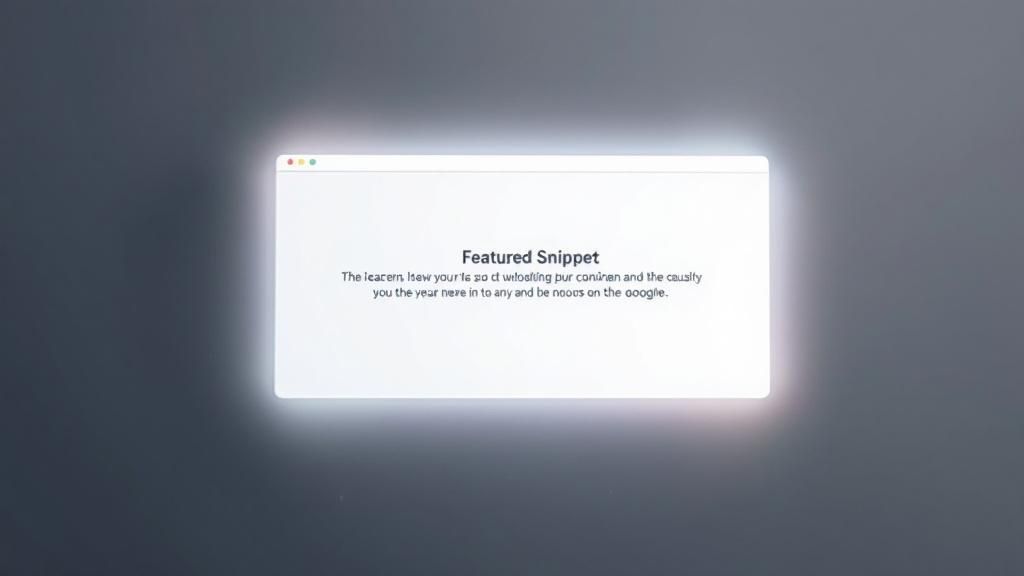
Meta Description: Discover 7 advanced SEO copywriting tips to boost your rankings. Learn to master keyword placement, user intent, featured snippets, and more for 2025.
Are you a marketer or creator who crafts compelling content, only to see it buried in search results while competitors with less valuable articles rank higher? This is a common and frustrating challenge. The secret to visibility isn't just about writing well; it's about mastering the art of SEO copywriting—writing for both humans and search engine algorithms at the same time. This article provides seven actionable SEO copywriting tips designed to bridge that critical gap. We'll move beyond the basics, giving you advanced strategies to boost your traffic, engagement, and search rankings, ensuring your expert content gets the recognition it deserves.
1. Master Keyword Research and Strategic Placement
The foundation of effective SEO copywriting begins long before you write a single word. It starts with comprehensive keyword research to identify the specific terms your audience uses. For a digital marketing agency, this means knowing if a potential client is searching for “AI social media scheduler” versus “automated content posting tools.” Mastering this first step ensures your content aligns directly with user search intent, making it discoverable by the right people at the right time.

Simply stuffing keywords into your text is an outdated and ineffective practice. Modern SEO focuses on strategic placement and building topical authority. This means creating keyword clusters around a central theme. For instance, a primary article on "SEO copywriting tips" should also naturally incorporate related long-tail keywords like "how to write for SEO," "on-page copywriting examples," and "keyword placement best practices." This approach signals to search engines that your content is a comprehensive resource on the topic, helping you rank for a wider range of queries.
How to Implement Strategic Keyword Placement
To apply this crucial tip, integrate your chosen keywords naturally into key areas of your content. This enhances both search engine visibility and user experience.
- Title Tag and H1: Your primary keyword should appear in your main title (H1) and SEO title tag, preferably near the beginning.
- Introduction: Mention your primary keyword within the first 100 words to immediately confirm the topic for both readers and search engine crawlers.
- Subheadings (H2, H3): Use secondary keywords and long-tail variations in your subheadings to structure your content and target related queries.
- Body Content: Weave keywords and their synonyms throughout your text, but always prioritize readability and a natural flow.
For a deeper dive, there are many powerful SEO tools to supercharge your research efforts. Discover a curated list of top-tier keyword research tools on MediaWorkbench.ai to get started.
2. Craft Compelling Title Tags and Meta Descriptions
While your content's quality is paramount, its journey begins with a single click in the search results. Your title tag and meta description are your digital storefront window. These small snippets of text hold immense power to either capture a user's attention or be scrolled past. For freelancers and startups, mastering this element of SEO copywriting is crucial for improving your click-through rate (CTR), a key signal to search engines that your content is relevant and valuable.

These elements are not just for search engines; they are ads for your content. An effective title tag (50-60 characters) must include your primary keyword while creating curiosity. Similarly, the meta description (150-160 characters) should act as a compelling summary, expanding on the title's promise. For example, a content creator might use a title like "10 AI Prompts for Viral Video Ideas" because it uses a specific number and promises clear value, attracting clicks from users seeking actionable advice. This is far more effective than a generic title like "Using AI for Videos."
How to Write Click-Worthy Titles and Metas
To turn searchers into readers, your SERP snippet must stand out from the competition. Treat it as a mini-advertisement for your content.
- Titles: Incorporate numbers, brackets, or power words (e.g., "ultimate," "proven," "step-by-step") to grab attention. Ensure your primary keyword is present.
- Meta Descriptions: Think of this as the "why click" summary. Expand on the title, reinforce the value proposition, and use your secondary keywords naturally. End with a subtle call-to-action like "Discover the steps."
- Track and Optimize: Use SEO plugins to preview your snippets and monitor character counts directly within your content editor. This helps avoid truncation in search results.
- A/B Test: Don't be afraid to experiment. If a page has high impressions but a low CTR, try A/B testing different title and meta description combinations to see what resonates best with your audience.
For those just starting out, mastering these fundamental elements can significantly boost performance. To explore this topic further, discover more essential copywriting tips for beginners on MediaWorkbench.ai.
3. Optimize Your Header Structure (H1-H6)
Beyond keywords, the logical structure of your content is a powerful signal to search engines. Proper header hierarchy (using H1, H2, H3 tags) acts as a table of contents for both your readers and search engine crawlers. It breaks down complex information into digestible sections, significantly improving readability while helping search engines understand the main topics and subtopics of your page. A well-organized document is simply easier to interpret.

This is one of the most underrated yet effective SEO copywriting tips for boosting both rankings and on-page engagement. For content marketers creating long-form guides, a clear structure is essential. Imagine a guide on "AI for Content Creation." The H1 would be the main title. H2s could be "Using AI for Blog Posts," "AI Image Generation," and "Automating Social Media Content." Under the H2 for social media, H3s could break it down further into "Crafting Tweets with AI" and "Generating Instagram Captions." This systematic organization makes content easier for users to scan, reducing bounce rates and increasing time on page.
How to Implement Proper Header Structure
Applying a logical header structure is a straightforward process that pays significant dividends in search visibility and user satisfaction.
- Use a Single H1 Tag: Each page or post should have only one H1 tag. This should be your main title and must include your primary keyword.
- Structure with H2s and H3s: Use H2 tags for the main sections of your article. If a section has subsections, use H3 tags to nest them logically underneath the relevant H2.
- Incorporate Keywords Naturally: Your subheadings are prime real estate for secondary and long-tail keywords. Weave them in to create descriptive, user-focused headers.
- Prioritize Clarity and Readability: Headers should be clear, concise, and tell the reader exactly what to expect in the following section. Use them to break up long blocks of text and improve scannability.
👉 Try MediaWorkbench.ai for free – schedule your posts and generate AI content in one place!
4. Align Content with User Intent and Depth
Beyond just keywords, the most impactful SEO copywriting tip for modern search is to master user intent. This means deeply understanding what a user is truly looking for when they type a query. Are they seeking information (informational), looking for a specific website (navigational), or ready to make a purchase (transactional)? Crafting content that directly answers the underlying "why" behind a search query is non-negotiable for achieving top rankings.

This concept pairs directly with content depth. It's not enough to simply match intent; you must satisfy it completely. If a content creator searches for “AI tools for Instagram automation,” they don't want a generic definition. They expect a detailed comparison of tools, features, pricing, and use cases. A shallow 300-word overview won't suffice. Look at how top review sites dominate their niches: they provide exhaustive articles with hands-on testing, pros and cons, and clear recommendations. This combination of precise intent matching and authoritative depth signals to search engines that your page is the best possible answer.
How to Align Content with User Intent and Depth
To effectively implement this principle, you need to shift your focus from what you want to write to what your audience needs to know.
- Analyze the SERPs: The top-ranking pages for your target keyword are your blueprint. Analyze their format (are they blog posts, product pages, or videos?), the questions they answer, and their overall word count.
- Leverage "People Also Ask": Use the "People Also Ask" (PAA) boxes in Google to find the exact questions your audience has. Structure your content with H3s and FAQs to answer these questions directly.
- Provide Comprehensive Answers: Don't just scratch the surface. If you're writing a guide, include step-by-step instructions, screenshots, and real-world examples. This builds authority and keeps users on your page longer.
- Cite Authoritative Sources: Enhance your content's credibility by including quotes from experts, linking to reputable studies, and citing data. This demonstrates expertise and trustworthiness to both users and search engines.
5. Build a Strategic Internal Linking Strategy
An often-overlooked yet powerful element of SEO copywriting is crafting a deliberate internal linking strategy. This is the art of creating a logical, connected web of content that guides both users and search engine crawlers, distributing page authority and establishing your expertise on a subject. A well-executed strategy transforms your website from a collection of isolated pages into a cohesive and authoritative resource.
The core principle is building topical authority through "topic clusters." This model, perfect for marketing agencies and SaaS companies, involves a central "pillar page" covering a broad topic (like "AI for content creation") and linking out to more specific "cluster content" (like "AI tools for Instagram" or "Using AI to write blog posts"). This structure signals to search engines that you have comprehensive knowledge on a subject, making it one of the most effective SEO copywriting tips for establishing credibility and improving rankings across a set of related keywords.
How to Implement a Smart Internal Linking Strategy
To effectively weave internal links into your copy, focus on creating a natural and helpful user journey.
- Use Descriptive Anchor Text: Avoid generic phrases like "click here." Instead, use anchor text that clearly describes the destination page's content, such as "learn more about our content marketing services." This gives both users and search engines valuable context.
- Link Topically Relevant Content: Connect pages that logically belong together. An article about "SEO copywriting tips" should link to guides on keyword research or on-page SEO, not an unrelated service page.
- Prioritize High-Value Pages: Link to your most important pillar pages, service pages, and cornerstone content to pass authority and drive traffic to them.
- Audit Regularly: As you publish, update, or remove content, your internal linking structure will need maintenance. Regularly audit your links to fix broken ones and identify new linking opportunities.
By strategically connecting your content, you create a stronger, more navigable site that keeps users engaged longer. This is a key part of any robust content strategy on MediaWorkbench.ai.
Mastering these SEO copywriting tips is a transformative skill that elevates your content from just another article to a strategic asset that consistently drives organic traffic. It’s the bridge between creating content and creating content that performs. The effort you invest in applying these principles will pay dividends in sustainable, long-term growth, establishing your voice as a trusted resource. Ready to put these insights into practice?
👉 Try Media Workbench AI for free and accelerate your content creation today!

